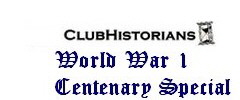|
The Every Man’s Club also shared another tradition with WMCIU clubs in that Tubby and staff put on a Christmas party for local children when they had the capacity to do so. The children still living in Poperinge and surrounding area often forgotten. Not all of them had been evacuated or had moved with their families. Life must have been very grim for these children living so close to the frontline. The Christmas parties with songs and presents would have been a treat for them, as indeed such parties were for working class children in the clubs back home.
Local woman, J. Battheu, recalled one such party from her childhood:
‘For the Christmas parties they tied pieces of string to the branches of the trees with apples hanging from them. They had covered these with jam. We were blindfolded however so we didn't know! They set us off and we had to bite into these apples and our faces were full of jam. How we laughed. We didn’t even feel the cold. We were very happy, that's for sure.’
The soldiers probably enjoyed entertaining the children at that special time of year. It must have hard as well for those with children of their own not knowing when or if they would see them again. As with many other activities at Talbot House, pleasure and friendship were always tinged with sadness and poignancy.
Another pastime at the House was for soldiers to look at a map of the local area and point to places they’d fought in, had lost friends at, had been wounded, nearly died and so on. The map became so marked by those hundreds of fingers on it, that it became in itself a historical document of where a lot of the action had been. Now this map is framed, safely behind glass, and on the wall of the ground floor of the House.
Talbot House Museum
I’d recommend anyone visiting Flanders to take time out for ‘Toc H’, to see the Every Man’s Club for themselves, to explore the house, gardens and the wonderful museum. There are details of soldier’s lives who visited Poperinge, soldiers of different rank. Many of them didn’t survive the war. You can read about all the activities that went on, find information about the war in the area and much more.
Although the museum looks small, it’s packed with interesting and sometimes moving detail. The concert hall upstairs has been refurbished to provide an interactive experience. I sat there alone and watched the film reconstruction of an actual concert and felt the fun and yet sadness of the occasion.
I enjoyed the customary cup of tea offered to visitors at the house. It was made not by a uniformed soldier as 100 years ago but a Canadian couple doing a volunteer stint looking after the house. There is a rota of volunteers from different places to do this. The role must appeal to those with a special interest in this period of war history and those who had relatives that fought or perished in the area. Accommodation is provided in return for looking after the place and making hundreds of cuppas!
One Size Fits All
One Website - All Devices
|
